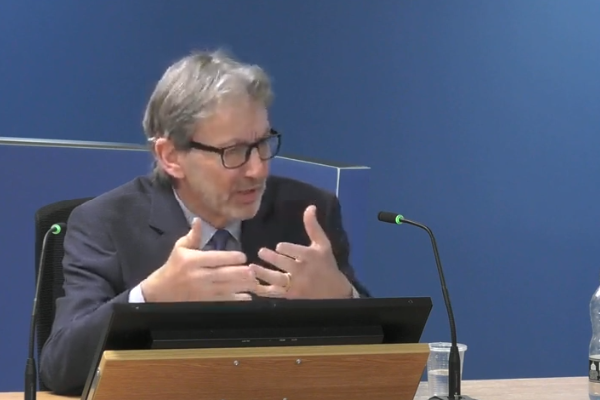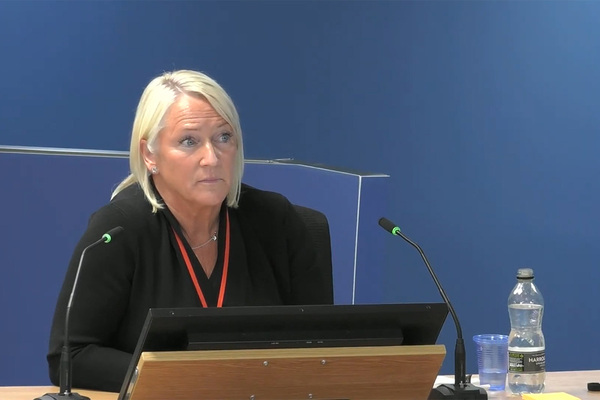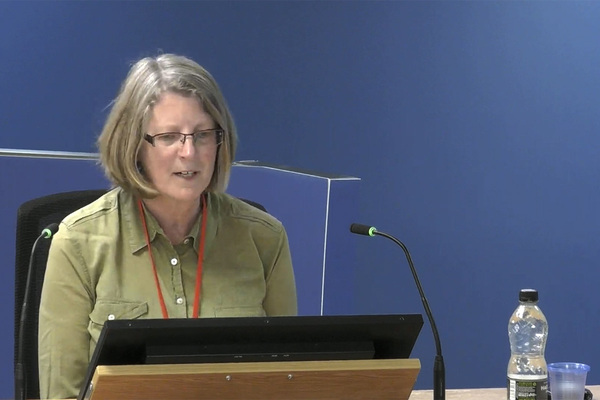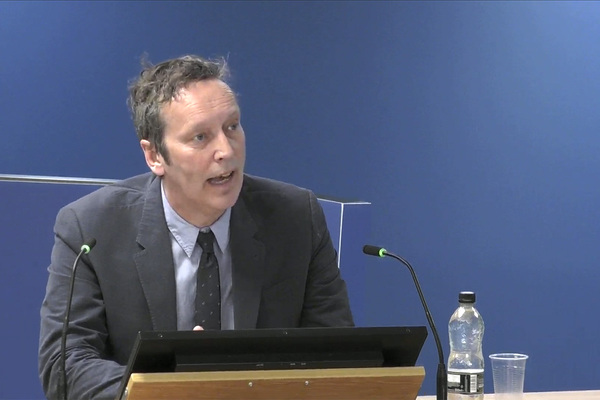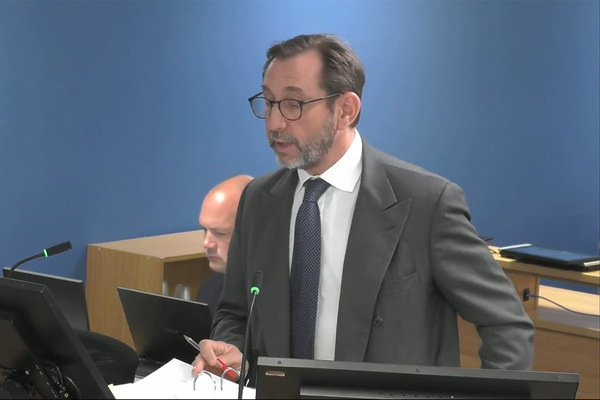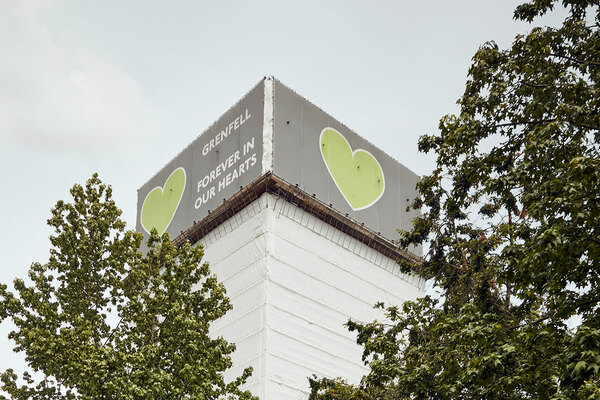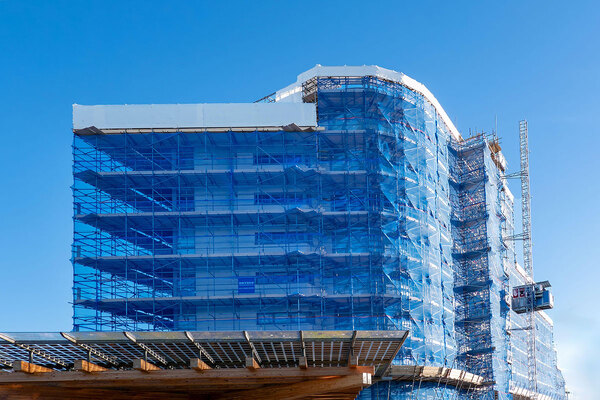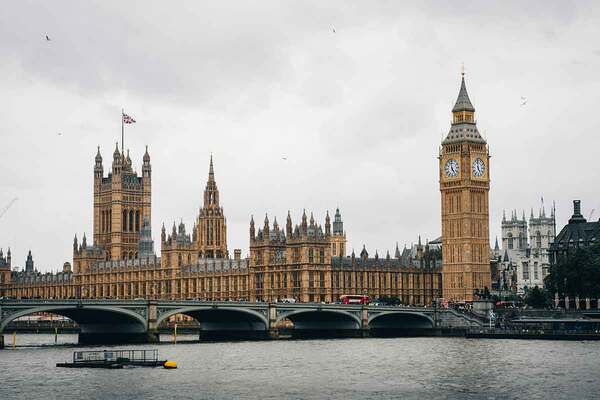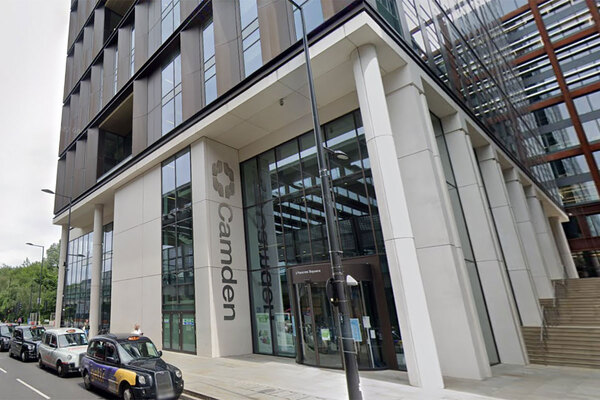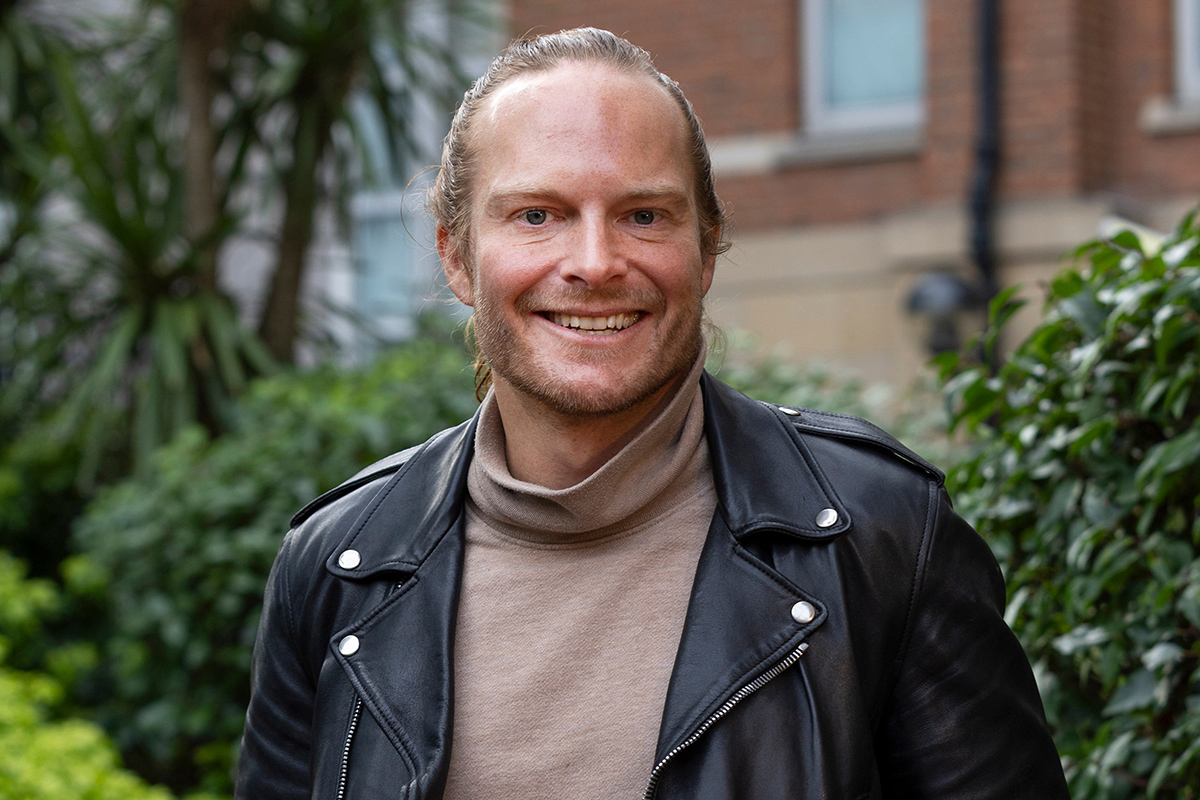Grenfell Tower Inquiry diary week 32: ‘Let’s hope our luck holds out and there are no fires in the meantime’
This week saw the return of the landlord of Grenfell Tower, Kensington and Chelsea Tenant Management Organisation (KCTMO), as senior staff members attempted to explain how vital fire safety protections at the block were allowed to fall into disrepair. Lucie Heath reports
For the second time in phase two of the Grenfell Inquiry we are hearing from the KCTMO, the organisation that managed council homes on behalf of the Royal Borough of Kensington and Chelsea (RBKC) Council.
As the manager of RBKC’s housing stock, the KCTMO was responsible for maintaining and repairing almost 10,000 council homes. This role included ensuring statutory fire safety checks were carried out within set deadlines and that all essential fire safety equipment was in place and working.
We already know from phase one of the inquiry that some fire safety protections did not work as they were supposed to on the night of the fire, such as the building’s fire doors. This week we learned more about how this situation came to be:
‘Was there any circumstance or time at which you were asked to consider the evacuation of vulnerable residents?’
On Monday we heard from Siobhan Rumble (pictured above), area housing manager for the Lancaster Estate that contained the Grenfell Tower, between 2012 and 2016, as well as her replacement Nicola Bartholomew. In these roles they were the most senior KCTMO employees based full-time on the estate and had regular interactions with residents.
One of the main topics of questioning was evacuation plans for residents with disabilities in the event of a fire. We already know that KCTMO had prepared no personal emergency evacuation plans (PEEPs) for residents with disabilities and that phase one of the Grenfell Inquiry recommended these plans now be required by law.
Both Ms Rumble and Ms Bartholomew said they never discussed evacuation plans for residents with disabilities with anyone at the KCTMO as it was their understanding that the building had a ‘stay put’ policy, meaning residents would be instructed to stay in their flat in the event of a fire.
We saw this advice was reiterated to one resident who used a wheelchair, Mariko Toyoshima-Lewis, when she specifically asked how she would escape the building in the event of a fire. Ms Toyoshima-Lewis was rescued by firefighters from her third floor flat on the night of the fire, however many other disabled residents were unable to escape.
‘Did you think that hoping your luck holds and there are no fires in the meantime was a safe way of proceeding?’
On Tuesday we heard again from Claire Williams (pictured above), project manager at KCTMO for the Grenfell Tower refurbishment. For one and a half days, lead counsel to the inquiry, Richard Millett QC, grilled Ms Williams regarding several fire safety protections that were either missing or in disrepair at the Grenfell Tower during and after the refurbishment.
Firstly the inquiry zeroed in on Grenfell’s automatic opening vent (AOV) system. An AOV system is a crucial piece of firefighting equipment that is supposed to remove smoke from communal areas in the event of a fire.
The questioning focussed on Grenfell's old AOV system, which was replaced as part of the refurbishment. However, Grenfell’s new AOV system is also believed to have failed on the night of the fire.
We learned last week that KCTMO knew about issues with the building’s AOV system as early as 2010, when the local fire service warned it had experienced a “catastrophic failure” during a fire at the tower that year in which three residents were injured.
This week we saw that the London Fire Brigade (LFB) issued KCTMO with a deficiency notice relating to the building’s system in March 2014, giving in a six-week deadline to resolve the issue.
KCTMO missed this deadline and an inspection of the system in October 2014 confirmed it was “beyond repair”. We saw a 2015 risk assessment carried out by the main contractor for the refurbishment, Rydon, in which it was confirmed “the detection and alarm systems and the AOV do not work”.
This means that KCTMO knowingly allowed residents to live in a building without a working AOV system for at least one year. Residents were never told about the broken system.
In one email former health, safety and facilities manager at KCTMO, Janice Wray, wrote to Ms Williams: “Let’s hope our luck holds and there are no fires in the meantime.”
After presenting this evidence, Mr Millet asked: “Did you think at the time that hoping your luck would hold, a sort of fingers crossed attitude, was really an appropriate way of discharging your health and safety functions?”
Ms Williams replied: “I didn’t think of it in those terms, but I appreciate it is a health and safety issue, which is why both of us were trying to keep it moving forward.”
During the period when Grenfell was without a working AOV system, we also learned that KCTMO took more than six months to fix a broken dry riser, a pipe used by firefighters to connect to a pressurised water source.
Ms Williams agreed that “a functioning dry riser is an absolutely essential active fire prevention system in any high-rise building”, but said it was not her responsibility to ensure it was fixed.
We also learned during Ms William’s evidence that the LFB had requested multiple times for a premises information box to be installed at Grenfell, which would include vital information for emergency services in the event of a fire.
Ms Williams said she was resistant to the idea as she thought the box would be vandalised and that she was told LFB could access the information digitally instead.
Phase one of the Grenfell Inquiry recommended that these boxes be required for all high rises by law after the fire brigade complained about delays in accessing essential information, such as a list of residents and floor plans, on the night of the fire.
‘Do you agree that you never in fact got ahead of the completing of the FRA actions but were always playing catch up?’
The week ended with questioning of Peter Maddison (pictured above), former director of assets and regeneration at KCTMO. This was also the second appearance for Mr Maddison after he appeared in module two. As the most senior KCTMO figure who gave evidence this week, we learned more about wider structural issues within the TMO that allowed the more specific disrepair problems at Grenfell to occur.
Mr Maddison told the inquiry when he joined the TMO in early 2013 he quickly realised there were several issues with health and safety at the organisation, including difficulties in obtaining data about “levels of compliance on all of our statutory areas of servicing”.
These issues were picked up during an audit by RBKC in 2013 in which the council identified “risk control shortcomings that if left unresolved could potentially expose the business and those in H&S management positions to corporate and personal liabilities”.
We saw minutes from a meeting in 2014 that confirmed KCTMO had 1,400 actions outstanding following fire risk assessments (FRA), a legally required inspection that identifies any fire risks within a building. Mr Maddison said this number was “high” in relation to KCTMO’s stock.
Around this same time senior KCTMO figures decided in one meeting not to disclose the size of the backlog to the LFB because of a fear that “this would result in more scrutiny from the LFB and also possible enforcement action”.
Mr Millett then spent the best part of a day going through minutes from KCTMO health and safety meetings from 2013 until weeks before the fire in 2017. In summary, the minutes showed that KCTMO slowly managed to reduce the backlog over several years but never fully eradicated it. In 2017, there were still a small number of actions that had been uncompleted for more than a year.
“During the period that you attended operational health and safety meetings and the health and safety committee meetings of the TMO do you agree that there was continual and frequent discussion about the importance of clearing FRA actions?” asked Mr Millett.
“Yes,” Mr Maddison replied.
“Do you agree that those discussions were already taking place when you joined the TMO in January 2013 and that they were still taking place in the days before the fire?”
“Yes,” responded Mr Maddison.
However, Mr Maddison said he did not agree that KCTMO “never fully got to grips with completing FRA actions” and that the organisation went on a “significant journey of progress” from 2013 to 2017.
We also learned during Mr Maddison’s evidence that RBKC had decided against undertaking an inspection programme of fire doors within the borough in the months before the fire at Grenfell, despite KCTMO being advised to do so by the LFB.
A number of issues were identified with the fire doors at the Grenfell Tower on the night of the fire, including that many did not self-close meaning smoke could easily spread from flats into communal areas.
KCTMO was alerted to this issue within its stock by the LFB in 2015 following a fire in another Kensington block, Adair Tower.
LFB requested KCTMO fit all its doors with self-closers and carry out regular inspections to ensure self-closers had not been removed or were broken. In 2016 the LFB issued a deficiency notice for Grenfell Tower, which raised the fact that the escape route out of the tower had “been compromised by the fitting of doors that do not self-close”.
Despite this, we saw minutes from a meeting between KCTMO and RBKC in March 2017 that said the council had decided to “hold off recommending inspections programme at present”. The minutes noted the “huge cost” of such a programme and said that KCTMO could be open to liability if the doors did not work.
“It looks to the naked eye as if at this meeting the tone of the discussion was one of resistance to the LFB’s expectation that the TMO install self-closers and maintain them,” Mr Millett said.
“No, I don’t agree with that. I think there was an acceptance that this needed to be done,” Mr Maddison replied.
‘Was there a reluctance… to allowing the Grenfell residents to express themselves collectively so as to make a louder, larger voice?’
One thread that ran through most of the week was KCTMO’s relationship with residents. Last week several former residents of the Grenfell Tower entered the witness box and detailed how they felt stigmatised or ignored by their landlord.
This week we learned that the organisation blocked its staff from accessing the blog written by Grenfell Action Group, which raised concerns about the refurbishment. The blog famously professed that the group “believe that only a catastrophic event will expose the ineptitude and incompetence of our landlord”.
We also learned that residents were not told about fire safety issues such as the broken AOV system and even saw KCTMO employees discuss not including this information in a Freedom of Information request sent by Grenfell resident Ed Daffarn, who was part of the Grenfell Action Group.
Several KCTMO witnesses insisted that residents’ complaints were listened to and that the majority of criticism came from a small group, including Mr Daffarn, which was not representative of the rest of the building. They also said Mr Daffarn could be difficult to deal with.
“Did you yourself ever consider whether there was a risk in blaming Mr Daffarn as an individual for the complaints that others had raised?” Mr Millett (pictured above), asked Ms Williams.
She said: “There was no automatic assumption that anything he said wasn’t right because quite often he was on the money, he was picking things up at an early stage.”
Despite this, the inquiry heard that KCTMO refused to recognise a group of residents that included Mr Daffarn as an official residents organisation until the local MP intervened in 2015.
“Was there a reluctance, so far as you could see it, within the TMO come the spring of 2015 to allowing the Grenfell residents to express themselves collectively so as to make a louder, larger voice?” Mr Millett asked.
Ms Williams said she did not think there was a reluctance, but that KCTMO wanted to make sure the group was “representative”.
The Grenfell Tower Inquiry continues.
Sign up for our weekly Grenfell Inquiry newsletter
Each week we send out a newsletter rounding up the key news from the Grenfell Inquiry, along with the headlines from the week
Already have an account? Click here to manage your newsletters

